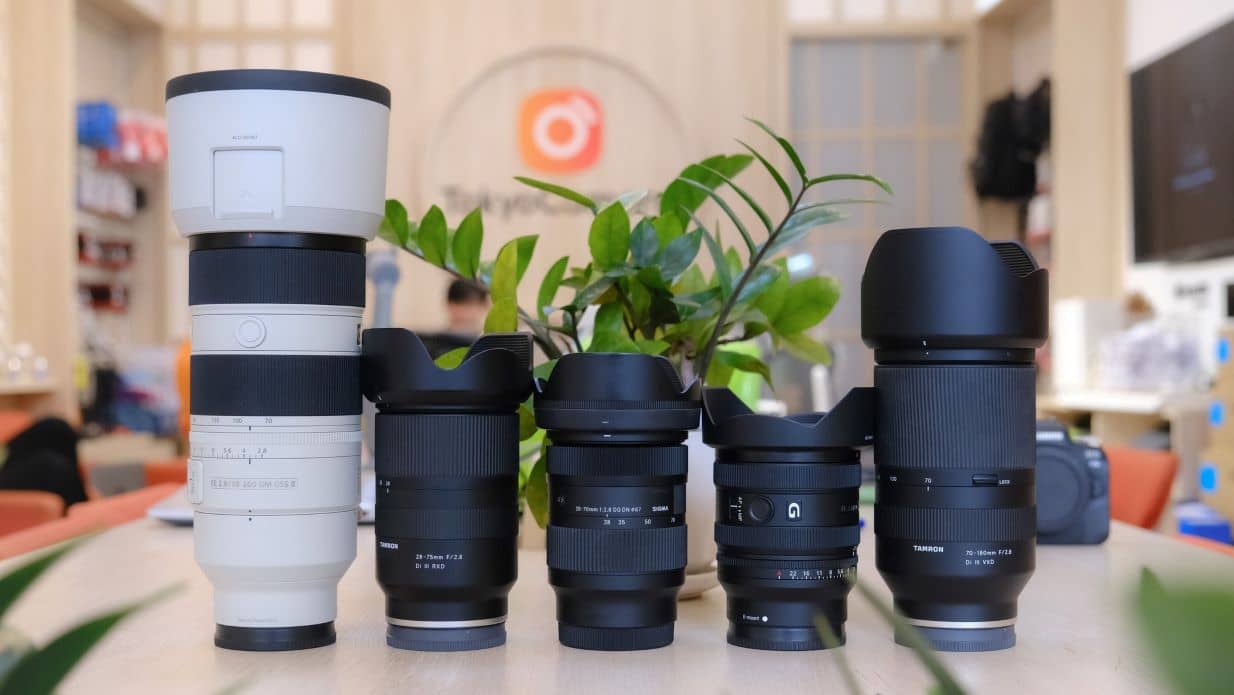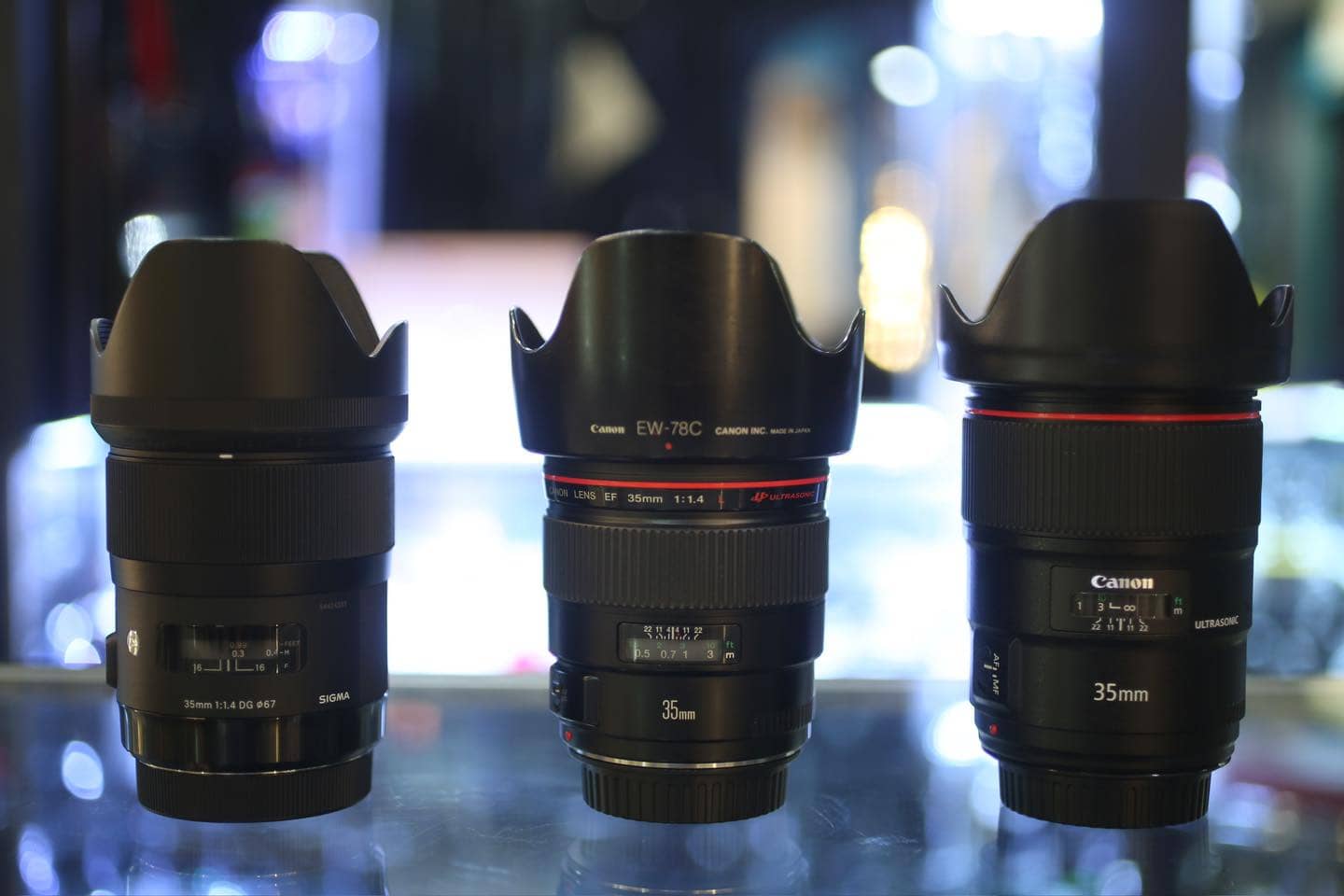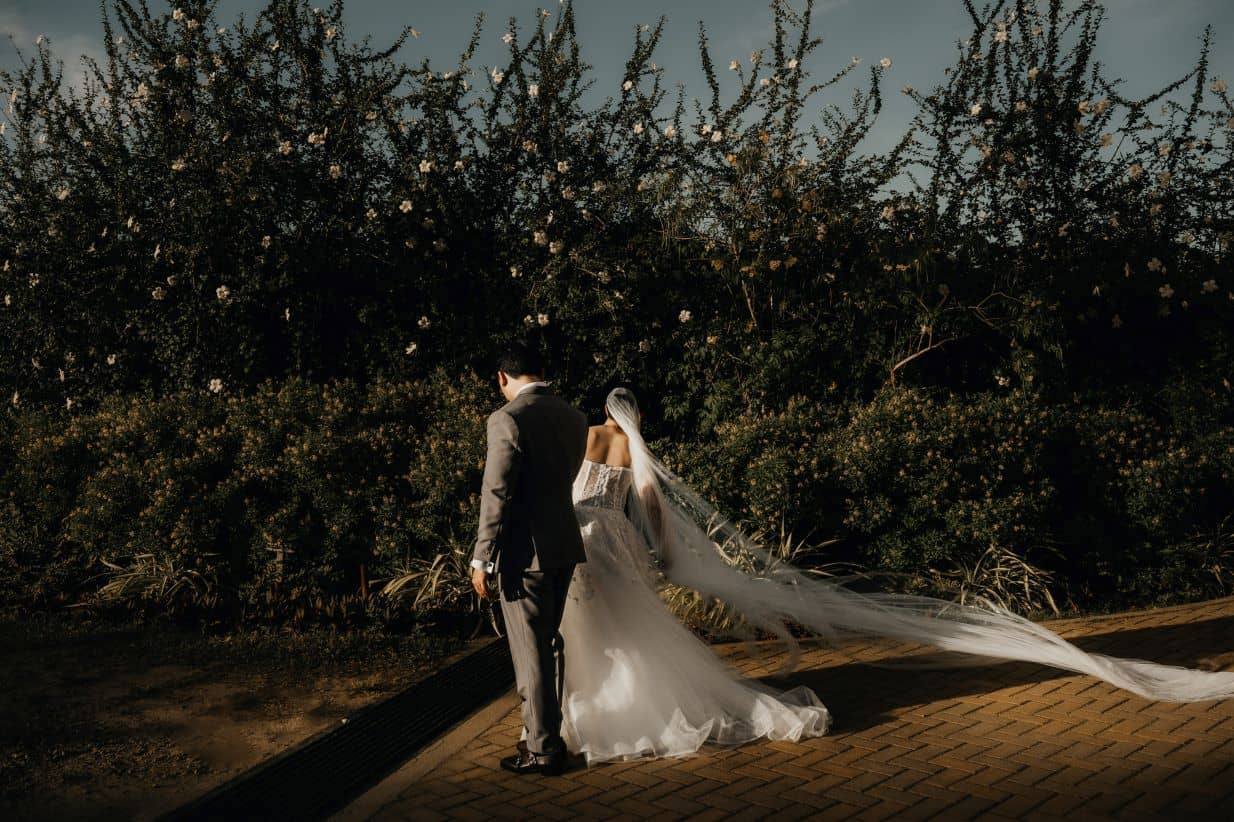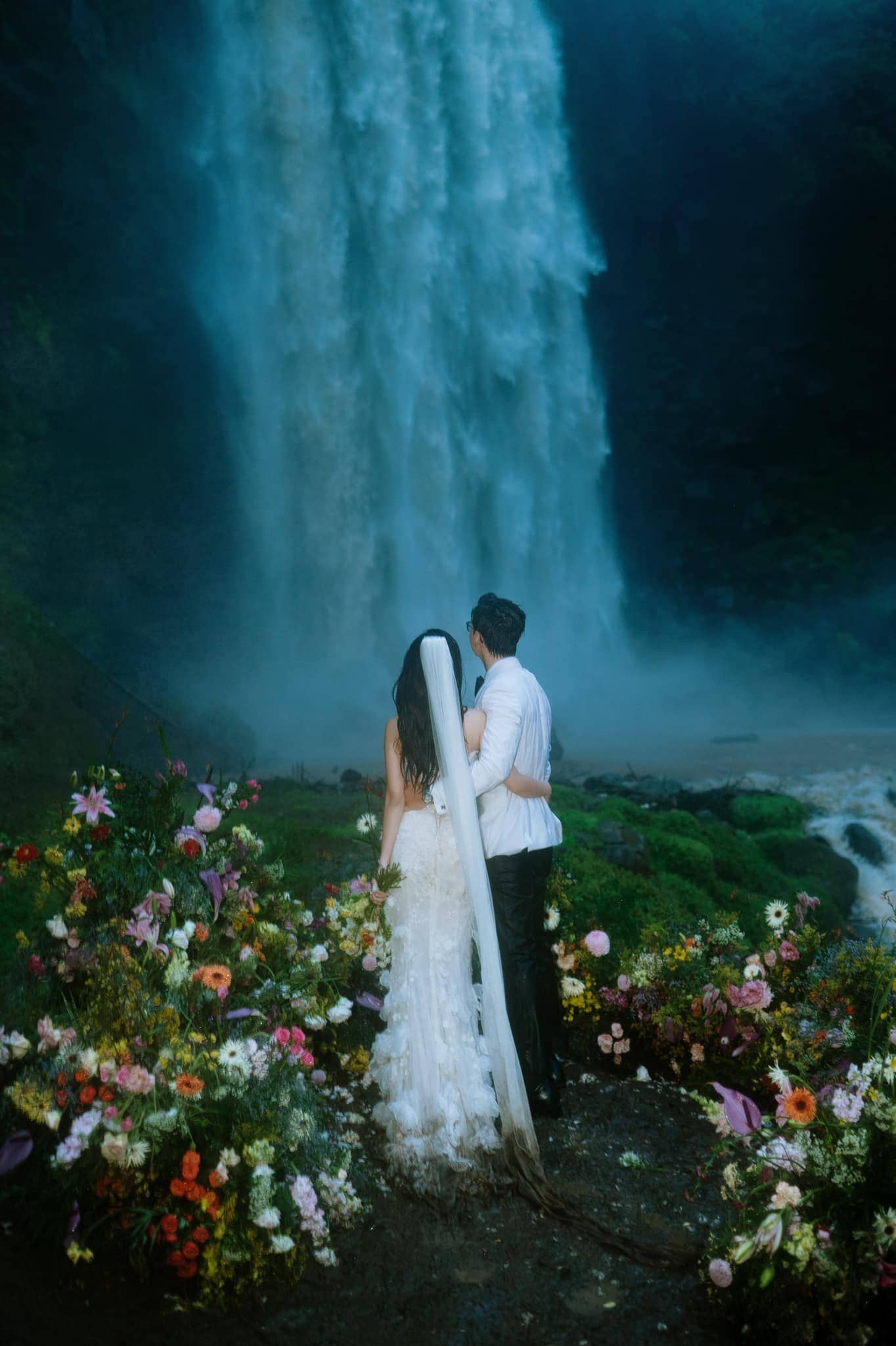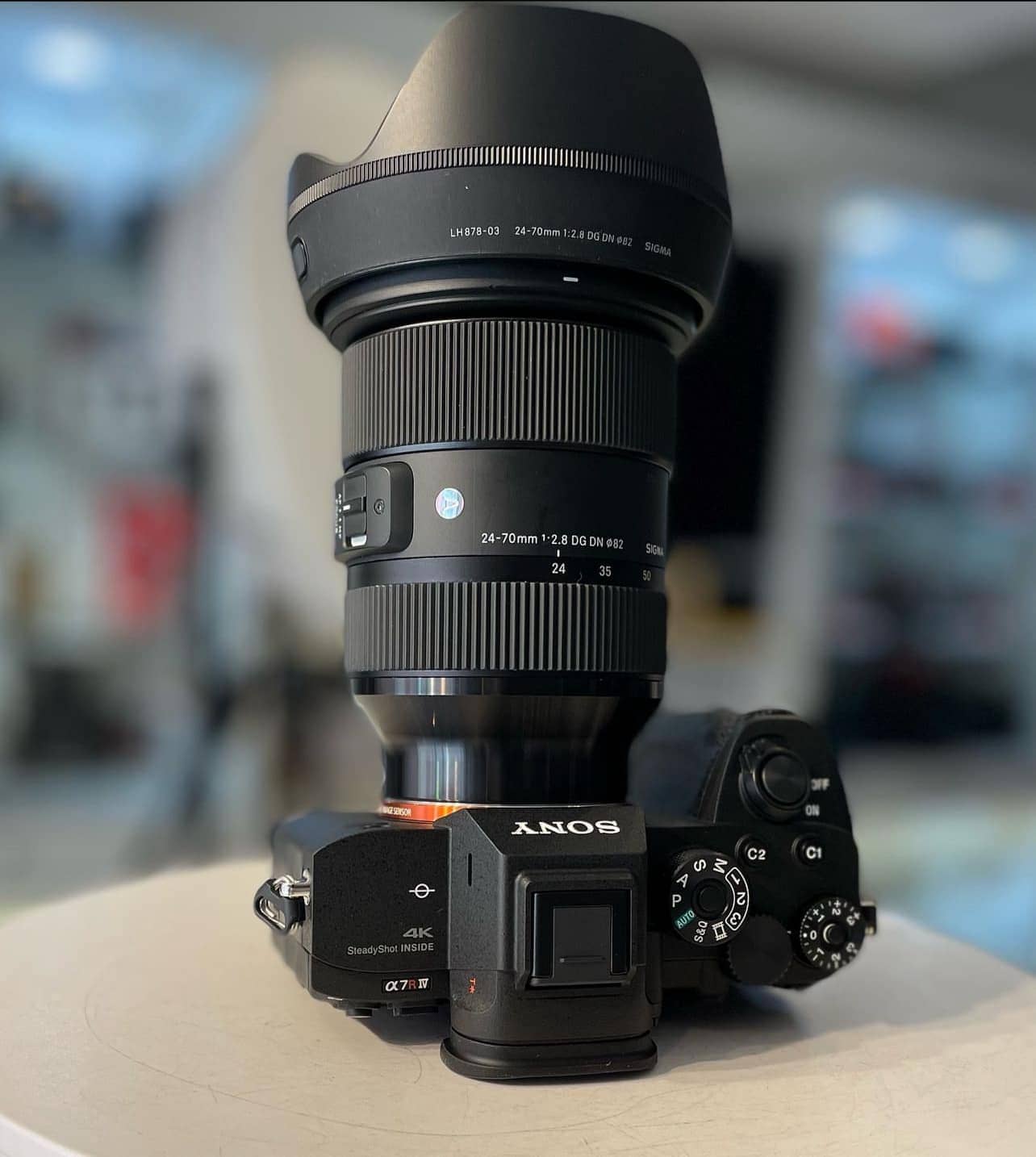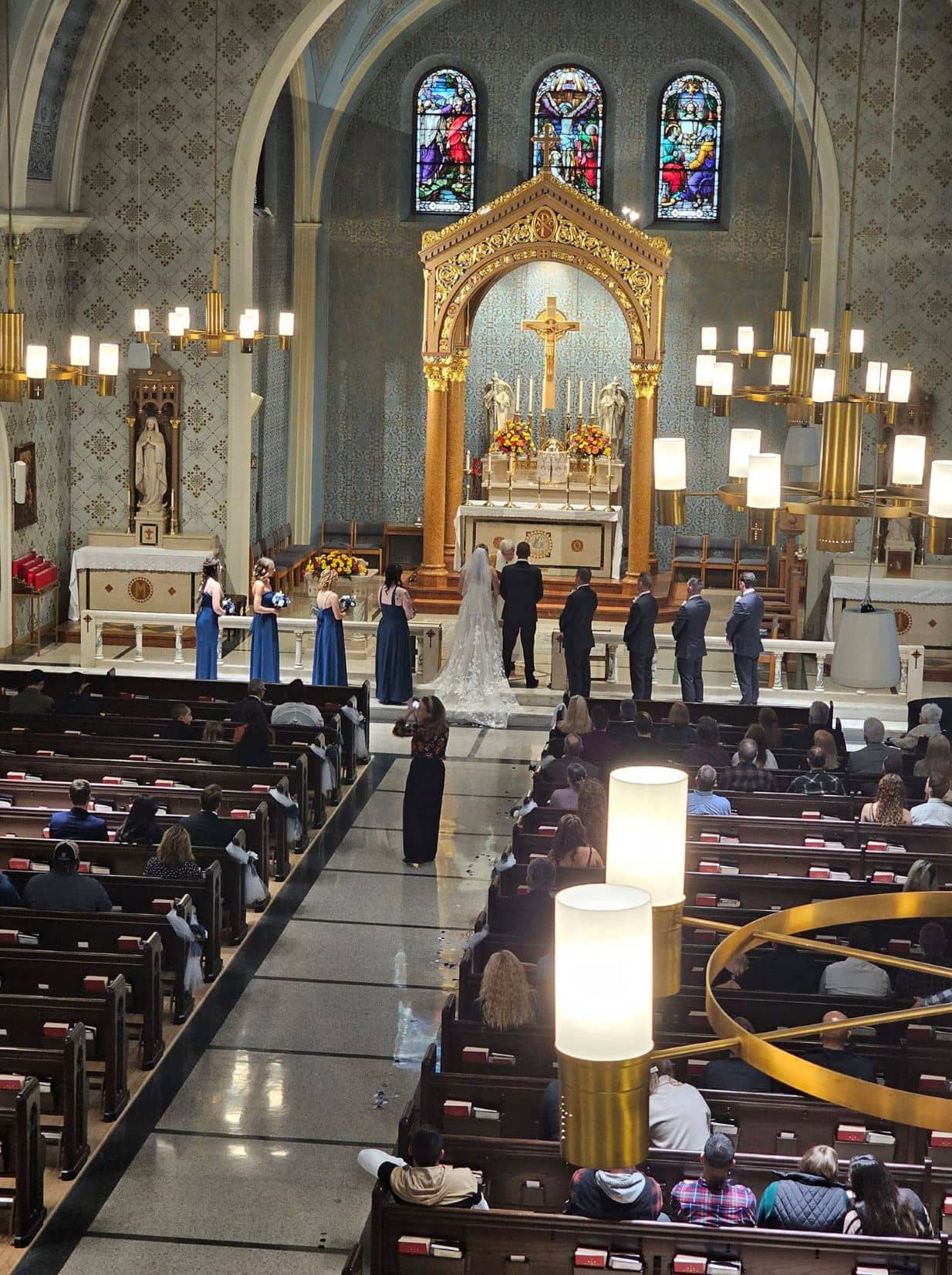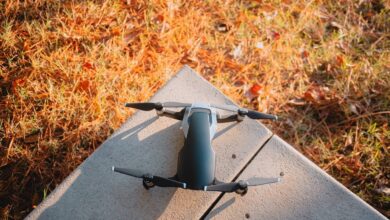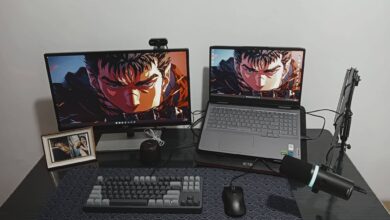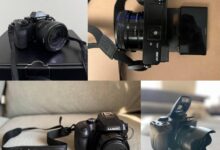Top 5 Best Lenses to Use for Wedding Photography
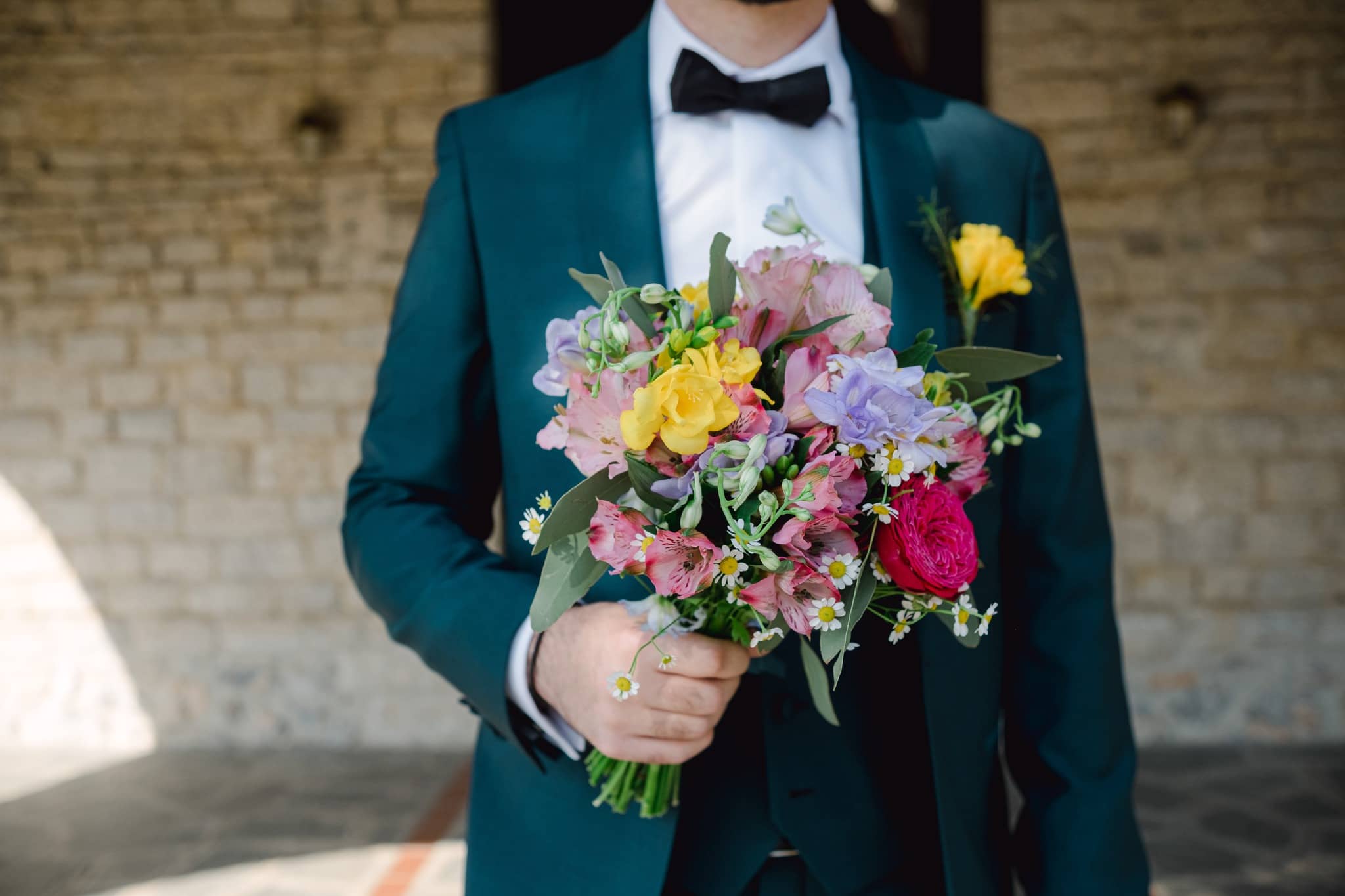
The special day arrives, groom in tailored suit and bride in white wedding dress. Only, the photography is way off. All of the guests are out of focus because an amateur, someone who’s never worked in wedding photography, has picked the wrong lens. No one wants to deal with an irate bride, and no one wants to be the cause of wedding tears when that missed moment has slipped away.
Wedding photography has turned more than a few professionals prematurely gray. Even if the employed pro is competent and equipped with an expensive mirrorless or DSLR camera, a model that includes all of the latest bells and whistles, it’s not going to capture the emotion of the day if the lens isn’t right, hence the premature gray.
To keep bridezillas happy, and grooms sane, we’ve decided to save the day by creating a post that lists the best lenses for wedding photography. A mix of wide angle and zoom barreled optics, each outfitted with superior light gathering apertures for low light weddings, these lenses are sure to depict the magic moment with stunning clarity, even if it’s just a father-in-law’s panicked glance at the reception bill.
Tips for Selecting and Using Wedding Lenses
What exactly is it that makes wedding photography different from, say, shooting a lion in the wilderness in Kenya. Well, the bride is potentially more dangerous than a lion. Jokes aside, the situation is unique. A tripod will be required for shots of the guests and main wedding party. As the happy couple get ready to depart, a medium zoom creates a soft falloff, the depth of field increases dramatically and the emotional overtones in that moment are perfectly realized.
Afterwards, removing the camera from the tripod, the wedding photographer wanders the reception, looking for unguarded moments of laughter, a light kiss, a cuddlesome dance filled with secret delight. He’s the silent observer, and his camera lens has enough wide angle power and focal length to preserve every fleeting second.
Going around the room, staffers united, especially those who have tied the knot themselves, we asked for tips on the best lenses for wedding photography. The first tip was to use several interchangeable lenses. A high-quality wide angle (16-35mm) lens is good for composing a full shot with every guest in there without them being forced to squeeze together.
The tips came fast and furious after that opener. Still on focal length musings, a 50mm lens was suggested for close portraits. Initially disregarded as too plain, the proposal was taken up by our lead staffer as sound because it aids in portrait shots without intruding on the emotions passing between the just-married couple.
A 24-70mm medium zoom lens should also be in the mix, capturing candid dance moments at a distance. It’s also a good pick if you’re limited in lens selections, as the lower end 24mm focal length setting could be used for portraits, too.
With the right lens in hand, you get the essence of love and celebration, not the missed opportunity that raises a tear-filled phone call from an unhappy bride. Let’s get started.
Best Lenses to Use for Wedding Photography
Canon EF 35mm f/1.4L II USM
Every wedding photographer needs a 35mm lens in their equipment bag. The bride could be in her room, preparing for her big day as her bridesmaid watches her shyly add the last few touches to the bouquet. A wide angle Canon EF 35mm f/1.4L II USM on a lighter DSLR freezes this moment for posterity. Intimate portraits are also no problem for this compact Canon barrel.
Three of our testers spent an afternoon shooting with this interchangeable clicked into place on a full-frame Canon EOS 5D Mark IV. Light enough to carry from the ceremony area to a designated venue room where portraits could be composed and shot, the lens proved to be a superior candid moment tool. More than this, the BR optics (Blue Spectrum Refractive Optics) technology built into the lens is particularly good in high-contrast wedding photography.
Not that there’s time or space to explain this chromatic aberration reduction tech, but let’s just say that 35mm wide-angle lenses and deep blacks don’t always mix well, especially when other vibrantly colorful hues are evident. The BR optics feature simply maintains color accuracy and sharpness, keeping image distortion at bay. It’s a feature that’s further enhanced by the presence of two aspheric elements and a fluorine coating, rear and front lens elements. Coatings abound, reducing everything from apprentice fingerprint smudges to weird late afternoon object flaring.
This is a focal length with slightly intrusive connotations, the photographer dipping in briefly to disturb the sanctity of the ceremony space. Our testers had to lean in to get shots of one another, resisting the temptation to pretend to throw a wedding bouquet over their shoulders while the nominated staff tester framed his shots up close. Offering a tad more intimacy, we turn to a Nikkor 50mm lens.
Nikkor Z 50mm f/1.2 S
 Nikon NIKKOR Z 50mm f/1.2 S | Professional extra-large aperture 50mm prime lens for Z series mirrorless cameras | Nikon USA Model
Nikon NIKKOR Z 50mm f/1.2 S | Professional extra-large aperture 50mm prime lens for Z series mirrorless cameras | Nikon USA Model
A switch to a lighter Z Series Mirrorless Nikon camera was used to serve up all of the event portraits. It’s also the classic wide-angle focal length for slipping in and out of the reception dance, capturing the doting smiles on parents and the loving glances in the eyes of the married couple as they take their first steps on to the dance floor. It won’t provide as much coverage as the 35mm, but it’s the more versatile wedding photographer companion.
On snapping the Nikkor Z 50mm f/1.2 S in place on its Z-mount, the super-wide aperture made low light photography in dim but romantically illuminated ceremony venues easy to achieve. No flash photography to disturb the intimate moment when vows are exchanged, the lens paired with the EXPEED 6 engine in the Nikon Z 7II to capture the blushing skin tones of one of our reviewers who’d been chosen to be our nominated “bride” of the day.
Other notable features include an anti-reflective nano-crystal coating, super-quiet AF via a compact duo of STM stepping motors, and a weather sealing system that defies wet and soggy wedding days, not that we’d ever wish a drizzly morning on the happy couple. These features are greatly enhanced by the addition of aspherical optics elements, extra-low dispersion glass, and several other coating technologies, each designed to minimize color and distortion effects, such as chromatic aberration and ghosting. Indeed, everything about the Nikkor Z 50mm f/1.2 S screams low-light quality, as suspended in 17 elements, 15 groups of high-end wedding photography glass.
Another benefit of the dramatically wide aperture, the f/1.2 light-funneling design, was the ability to seamlessly isolate the wedding couple from their background. Using advanced depth of field manipulation on the Nikon mirrorless Z series camera, we easily adjusted focal falloff, artistically creating a sense of romantic focus.
Sony FE 70-200mm f/2.8 GM OSS
It might at first seem like a curious choice for a wedding photographer’s equipment bag, so bear with us while we explain. The Sony FE 70-200mm f/2.8 GM OSS is one of the best lenses for wedding photography Sony aficionados can own when they’re hired for big weddings. The other equipment on this list, they all adapt well for smaller wedding parties, but this item can scale to take striking shots of large groups, then recompose for captures of an intimate moment from a distance.
The spec sheet provided to one of our staffers was, to say the very least, impressive. An 18 group, 23 element optics package in the long barrel implies tripod mounting when taking shots. A weight of 4.91 lbs further backs up that fact, as does the almost 12” barrel length. For these very few drawbacks, however, you receive a rich collection of Sony E-mount wonders, including a beautifully engineered 9 blade aperture and superior image stabilization, built right into the lens this time.
We came to the conclusion that the two massive lens groups and silent super sonic wave motor in the large lens created zoom and panning movements that were as effective in videos as they were in stills. What does this mean for the wedding photographer hired to preserve the special day? One less camera, as video and photography functions combine in a premium Sony Alpha mirrorless to record every minute of footage and every sensor-captured photographic still.
Test results seemed biased towards impressive bokeh effects, likely due to the 9 blade aperture. The same can be said for 37.8” minimum focusing distance, pulling in skin detail and wedding dress fabric stitching, even to the point of rendering detail from the bride’s face when concealed by her veil. Again, versatility is the goal with this lens; it can adapt to cater for large wedding parties, capturing wide-angle shots of 50 guests or more.
Canon EF 16-35mm f/2.8L III USM
The mark 3 iteration of the Canon EF 16-35mm f/2.8 is, along with most of the lenses in this review, built to perform sublimely in low light settings. Instead of super-fast action shots, though, we’re looking for dress and suit details in poorly lit churches and finely rendered facial features in dim event venues, places where window luminance and artificial lighting will hamper the emotional connection a photographer is seeking.
This high-end lens from Canon has its f/2.8 aperture spread and wide angle zoom versatility to recommend it as a wedding lens. Bokeh is attractively displayed for additional mood enhancement via the 9 blade circular aperture, which really opens up the shape of these out of focus highlights to artistic interpretation. If anything, the smooth glass optics within the 16 element, 11 group barrel assembly accentuates bokeh.
Other than that, photographers at the ceremony will likely notice a reduction in ghosting and flare from stained glass church windows thanks to the SubWavelength Coating (SWC). A snappy autofocus lock on guests and the special couple is assured with church-like silence due to the Canon USM feature delivering silent operation.
Incredibly sharp without adding harsh details, we see the Canon EF 16-35mm f/2.8L as one of the best lenses to use for wedding photography. It’s not necessarily the go-to lens for close-up portraits, but its compositions tend to empathize the emotional connection between subject and background, so if the bride and groom stand before the antiquated chamber of a church or in some great outdoors locale, this optics package will render the wide-angle beauty of the scene.
Sigma 24-70mm f/2.8 DG DN Art
The Sigma 24-70mm f/2.8 DG DN Art is a versatile option for those who favor the benefits found in Sony or Leica mirrorless cameras. You’d need to take a closer look at the Sigma website, but a patient search reveals the dropdown box, which is where you can select either the Sony E-mount lens ecosystem or the L-mount variant, designed to fit Leica cameras. Kicking off the features list with a bang, the f/2.8 low light aperture freezes that first kiss after the vows.
The 19 element, 15 group, including three aspheric lenses, wide angle zoom isolates subjects at a distance, allowing the photographer to hang back and absorb the moment, recording every detail without actually interfering with the desired intimacy of the ceremony. The barely 5” long barrel also allows for tripod detachment so that the wedding photog can float around the periphery and record a subtle glance between the couple or a blush of the bride’s cheeks as she lowers her veil.
Continuing on with this non-big-brand wide angle lens, it’s fitted with an 11 blade aperture diaphragm, so blurry highlights in the form of aesthetically pleasing bokeh can be captured along with all of the low light detail and flash-less color depth.
A full-frame Sigma lens with mirrorless pedigree, the 24-70mm zoom versatility offered by this bag barrel make it something of a likely candidate for a prime slot in a soft camera bag interior. Personally, we liked the ghosting and chromatic aberration reduction features, which we believe are handled by the nano porous coating, as listed on the Sigma website. Low light dispersion glass is also part of the package, ensuring high contrast and image sharpness at all times.
A Recap of the Best Wedding Photography Lenses
We honor wedding photographers, fully aware of the stress and strain they encounter in their chosen field. By using the best lenses for wedding photography, they stand a far better chance of creating emotionally charged, perfectly framed shots of the wedding party, in general, and the wedded couple, in particular.
To this end, a wealth of equipment needs to be on hand. A tripod and camera equipment bag are pressed into service, perhaps isolated from the crowd of guests so that there are no unfortunate trips to damage the expensive gear or spoil someone’s pristine clothing. A prime lens is pride of place on the camera. It’s the 50mm or 35mm (Nikkor or Canon) lenses, capturing the entirety of the venue. The pro in charge of the shoot can even detach from the tripod and hit the prep rooms, taking photos of the bridesmaids or the groom’s friends in their tuxes.
One of the secrets of wedding photography, though, is how to become invisible in a crowded space. The photographer uses wide-angle 24-70mm distance composing to make this possible. As a bonus to this feat, he isolates the subject, injecting the scene with tantalizing signs of blurry bokeh. The Sony FE 70-200mm would make a good candidate for this role as well. Generally, though, all of these wedding photography lenses incorporate intricate aperture diaphragms, so a desired depth of field and bokeh effect is easy to dial in, plus many of the cameras wedding photographer bring to a shoot like this will feature some kind of a live preview system, allowing for perfect composition.
Wedding photography lenses, the skill to select one of these barrels, long or short, develops over a period of time. The pro in this field should hopefully be a people person, someone who can coral guests when required or fade into the background at a moment’s notice. Hard enough to achieve with any camera, the right lenses deliver more intimacy and more romance, showcasing chosen subjects by employing background isolating tools.
No matter how good a photographer is at wedding shoots, it’s suggested that at least two lenses, preferably four, be included in a camera bag. A 50mm or 35mm close portrait lens is desirable, as is some kind of medium-zoom, wide-angle lens like the Canon EF 16-35mm f/2.8L III USM.
Done and dusted, best lenses to use for wedding photography determined, our team of reviewers wish you the very best in all your future ceremony and reception capturing endeavors as a wedding photographer.
